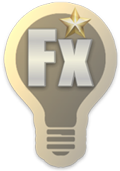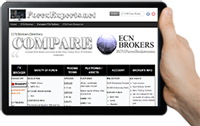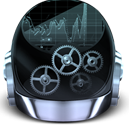Trade Systems
 StrategyQuant Review -Creating Advanced Trade Strategies
StrategyQuant Review -Creating Advanced Trade Strategies
StrategyQuant is a revolutionary platform for generating and backtesting automated strategies for trading Forex, equities, ETFs, and more. It requires no programming skills or specialized trading knowledge.
💻 Introducing StrategyQuant
The platform enables strategy building through a combination of tools such as prices, indicators, price patterns, oscillators, order types, and time values (like time of day or day of the week). These parameters, known as ‘Building Blocks,’ are combined using logical operators to create entry and exit rules.
StrategyQuant also offers a wide range of ready-to-use strategies for various financial markets and timeframes. Finalized trading strategies can be exported as MetaTrader 4 or NinjaTrader Expert Advisors, complete with full source code.
🔗 Find Out More: ► StrategyQuant Website
Compatible Trading Platforms
 You can make the StrategyQuant strategies work with Metatrader4 and other platforms
You can make the StrategyQuant strategies work with Metatrader4 and other platforms
(1) MetaTrader-4
(2) NinjaTrader
(3) TradeStation
System Requirements
The minimum system requirements to use the platform:
-Windows-based system (Vista and above)
-1.2 GHz processor with 512MB RAM and 500 MB HD free space
-For better results, the StrategyQuant team recommends an i5 or i7 processor
- Trading System: 1000pip Climber
- Platform: MetaTrader-4 ( MT4 )
- Price: $299 $149
- License: Lifetime
⚙️ Introduction to 1000pip Climber System

The 1000pip Climber System features an advanced trading algorithm developed by an experienced algorithmic Forex trader. The system is designed to make it as straightforward as possible for home traders to succeed in Forex trading.
The system continuously analyzes the Forex market, searching for high-probability trading opportunities. When a signal is generated, it can notify you visually, audibly, via email, or through MT4 push notifications.
A key feature of this system is that all trade parameters are provided:
-
trade direction
-
entry price
-
take profit
-
stop-loss
This makes the system exceptionally easy to use and allows it to be followed 100% mechanically—just follow the system and see the results. It is one of the simplest approaches to trading the FX market that we have encountered.

A managed Forex account is a type of account where a professional money manager trades on behalf of the client for a fee. This allows investors to save time, earn stable returns, and reduce their overall portfolio risk.
Investors can choose from various types of managed accounts, but we focus on PAMM, LAMM, and MAM accounts. These three types offer greater flexibility, low entry requirements, and anti-fraud protection. PAMM investors deal directly with their chosen Forex broker, while money managers have no access to the investor’s capital.
💼 What is a Managed Forex Account?
A managed Forex account is a segregated trading account owned by each investor but managed by a professional money manager. Such accounts should provide safety, transparency, flexibility, and full control.
Key Features
-
Professional Expertise: Gain access to experienced traders without requiring personal market expertise.
-
Hands-Off Investing: Avoid spending time on chart analysis or trade execution.
-
Transparency: Monitor trades live through your brokerage account.
-
Risk Controls: Managers typically implement tools like stop-loss orders, position sizing, and diversification to manage risk.
How It Works
(1) Account Setup:
- Open a forex trading account with a broker that offers managed account services.
- Provide a limited power of attorney (LPOA) to the manager, enabling them to trade on your behalf without access to withdraw funds.
- You keep full ownership and control over withdrawals.
(2) Capital Allocation:
- Fund your account (minimum deposits typically range from $5,000 to $50,000 or more).
- The manager may combine your funds with other investors’ capital or manage it separately.
(3) Trading Execution:
- The manager implements their chosen trading strategy—whether algorithmic, discretionary, scalping, or swing trading—to place trades.
- You receive consistent performance updates, either daily or weekly.
💵 General Types of Managed Accounts
There are five general types of managed accounts: individual, pooled, PAMM, LAMM, and MAM.
(a) Individual Accounts
This classic account type refers to an individual account managed by a professional on behalf of the investor. Typically, minimum deposit requirements exceed $10,000. Management fees are customizable but usually performance-based.
-
Requires careful consideration
-
High deposit requirements
-
Customizable fees
Automated Forex Trading Systems (EAs)

Fully automated trading systems have become increasingly popular among Forex traders; these systems are commonly known as Expert Advisors (EAs) or Forex Robots.
⚙️ What is an Expert Advisor (EA)?
An Expert Advisor is a small piece of software that integrates with a Forex platform and executes trades in the Foreign Exchange market without human intervention. The most popular platform for automated trading is MetaTrader4, although other platforms such as JForex, CTrader, TradeStation, ZuluTrader, and NinjaTrader are also used. Most Forex traders prefer MetaTrader4 due to the wide range of available automated trading providers.
Core Components
- Algorithmic Engine: Leverages mathematical models and technical indicators (e.g., moving averages, RSI) to analyze real-time market data and generate trading signals.
- Predefined Rules: Traders configure entry and exit criteria, risk management parameters (such as stop-loss and take-profit levels), position sizing, and trading time windows.
- Automated Execution: Once a valid signal is identified, the system executes trades automatically through integrated trading platforms like MetaTrader 4/5.
 Forex Pattern Recognition
Forex Pattern Recognition
What is Chart Pattern Recognition?
Chart pattern recognition refers to computer algorithms designed to identify recurring formations in the price data series of a financial instrument, known as chart patterns. It is a machine learning process, where developers train and customize the system using historical price data (a supervised process) to forecast future price behavior (an unsupervised process).
 💻 Introduction to Chart Pattern Recognition
💻 Introduction to Chart Pattern Recognition
Chart pattern recognition systems are part of technical analysis software. Their purpose is to analyze and identify recognizable patterns that may appear in the price charts of Forex pairs, indices, commodities, and more. There are hundreds of different patterns. The recognition process incorporates various technical analysis theories, such as Elliott Waves, Fibonacci Ratios, and Harmonic Patterns. These patterns tend to be more reliable when identified on longer timeframes, such as 1-hour, 4-hour, and daily charts.
Factors Affecting a Pattern’s Reliability
-
Market Trend: Patterns that align with the prevailing trend—such as continuation patterns—tend to be more reliable than reversal patterns that go against the current trend.
-
Support and Resistance: Patterns forming near significant support or resistance levels hold greater significance.
-
Volume: A breakout or breakdown confirmed by high trading volume greatly enhances the pattern’s validity.
-
Timeframe: Patterns observed on higher timeframes (daily, weekly) generally offer stronger signals compared to those on lower timeframes (5-minute, 15-minute).
Always avoid trading patterns in isolation. Consider the broader market context to improve decision-making.
Chart pattern recognition software
Chart pattern recognition software includes:
■ Indicators that plug-in into a trading platform (MT4, MT5, etc.) and operate fully autonomous, without any human intervention
■ Computer algorithms that run on a web-server and distribute their findings (identified chart patterns) to a list of subscribers
Subcategories
Rating Formula Comparisons
Trade Strategy
Forex Brokers
💡 Forex Ratings
 Forex Broker Ratings Powered by the Next-Generation RatingFormula 5.0 (?)
Forex Broker Ratings Powered by the Next-Generation RatingFormula 5.0 (?)
The RatingFormula series, developed by George M. Protonotarios, is designed to bring objectivity to online corporate ratings. In the future, search engines and various applications are expected to adopt similar rating algorithms to accurately assess the true value of online corporations for users and rank them accordingly in search results.






